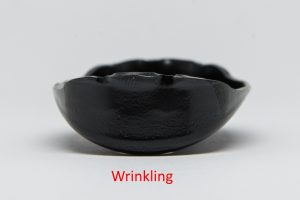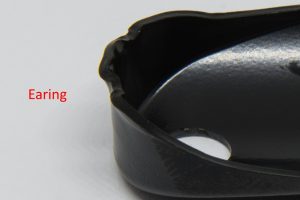
Deep drawing is a kind of cold processing, which is a plastic flow inside the material. The metal sheet blank is gradually transferred to the cylinder wall and drawn into a three-dimensional hollow part. It is widely used in the manufacture of industrial and daily necessities. Deep drawing can be used to make thin-walled parts of cylindrical, rectangular, stepped, spherical, conical, parabolic and other irregular shapes. If combined with other stamping processes, it can also produce more complex parts.
How to know if the part is suitable for deep drawing?
Before designing the progressive stamping dies for deep drawing, the evaluation of the drawing should be carried out in priority. The evaluation contents are as follows:
1. Accuracy requirements:
Because there is a certain amount of material deformation, the general tolerance requirements of deep drawing are +/-0.05mm at least. Besides, the tolerances of the inner and outer diameter should be consistent.
2. Appearance requirements:
The material will rub sharply with the mold when deep drawing, so the appearance can not be so smooth. And the side of the cylinder may have a concave or curved shape.
3. Depth:
It is necessary to pay attention to whether the thickness of the material can be drawn to the required depth and height of the part. Due to the difference in the machine and the process, the aspect ratio, height, and wall thickness will be limited.
4. Shape:
As simple as possible, it is conducive to uniform material flow.
5. Radius:
the radius should not be too small. Generally, the radius of the bottom and the top edge of the cylinder should be larger than R1.0.
6. Additional punching hole:
It is necessary to evaluate whether punching holes at the bottom and the sidewall of cylinder can be realized in the progressive mold. For example, the punching on the bottom might be too close to the radius, or if the punching on the sidewall can be effectively deburred, etc.
Common defects in deep drawing
Due to material characteristics, machine limit, unevenness of mold extraction gap, frictional resistance, and positioning error, etc. fracture, wrinkling and earing might occur during deep drawing.
1. Fracture
The fracture occurs when the sheet metal is subjected to strains exceeding the safe strain limits of the material. It usually appears near the punch corner (bending radius) due to the stress concentration.


2. Wrinkling
Wrinkling occurs in the flange when compressive stresses in the circumferential direction reach a critical point of instability. It can occur in regions where the workpiece is unsupported or when the blank holding force is insufficient.
3. Earing
Deep drawing of anisotropic sheets results in a drawn cup with uneven top edge, like some waves at the top. This defect is called earing.
Regarding wrinkling and earing, it is necessary to consider the amount of extra trimming to make sure the edge is flat for better use.
You can find the photo display of the stamping parts made by us HERE!
